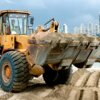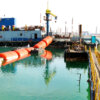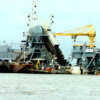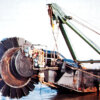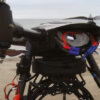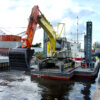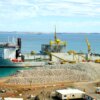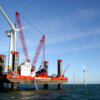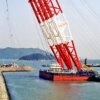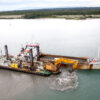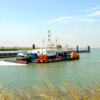Ploughs, beams and rakes are tools that are attached to an A-frame, mounted on the stern of a tug or work boat and dragged across the waterbed.
Ploughs, beams and rakes are hydronamic dredgers that mobilise material underwater and then use the bed slopes and natural water currents to move the material to another location. They are dredging tools that offer an economical solution, requiring only a very limited amount of energy, which makes them environmentally friendly.
Ploughs
Ploughing is often used on dredging sites to even out irregularities in the seabed.
Ploughs vary in size, weight and are suitable for different types of seabed. They may be specially designed beams or bottomless buckets which may hold onto the bed material for a short period of time.
Beams and rakes
Beams and rakes generally sweep across the seabed and do not hold onto the bed material, but push or ‘rake’ it, re-suspending it immediately back into the water at another point.
Work method
All of these devices move, rather than remove, the bed material putting it either directly or indirectly into the water column as suspended sediment. This means they require no disposal sites as they level the seabed, towed behind a suitable boat, flattening areas where sediment has accumulated without the need to lift material from the seabed and place it elsewhere. On the other hand, the potential for increasing suspended sediments should be considered.
Production rates
Ploughs, beams and rakes have relatively very low production rates, but are inexpensive to mobilise and use.



